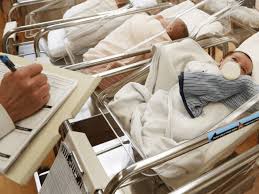
Breaking News
 Victor Davis Hanson: What the Media Won't Tell You About John Bolton FBI Raid
Victor Davis Hanson: What the Media Won't Tell You About John Bolton FBI Raid
 Giving Ukraine a US Security Guarantee Risks National Suicide
Giving Ukraine a US Security Guarantee Risks National Suicide
 The Oklahoma City Bombing: A Lesson in Government Lawlessness
The Oklahoma City Bombing: A Lesson in Government Lawlessness
 The Insurrection Act – Can the POTUS Deploy the National Guard to America's Cities?
The Insurrection Act – Can the POTUS Deploy the National Guard to America's Cities?
Top Tech News
 NVIDIA just announced the T5000 robot brain microprocessor that can power TERMINATORS
NVIDIA just announced the T5000 robot brain microprocessor that can power TERMINATORS
 Two-story family home was 3D-printed in just 18 hours
Two-story family home was 3D-printed in just 18 hours
 This Hypersonic Space Plane Will Fly From London to N.Y.C. in an Hour
This Hypersonic Space Plane Will Fly From London to N.Y.C. in an Hour
 Magnetic Fields Reshape the Movement of Sound Waves in a Stunning Discovery
Magnetic Fields Reshape the Movement of Sound Waves in a Stunning Discovery
 There are studies that have shown that there is a peptide that can completely regenerate nerves
There are studies that have shown that there is a peptide that can completely regenerate nerves
 Swedish startup unveils Starlink alternative - that Musk can't switch off
Swedish startup unveils Starlink alternative - that Musk can't switch off
 Video Games At 30,000 Feet? Starlink's Airline Rollout Is Making It Reality
Video Games At 30,000 Feet? Starlink's Airline Rollout Is Making It Reality
 Automating Pregnancy through Robot Surrogates
Automating Pregnancy through Robot Surrogates
 Grok 4 Vending Machine Win, Stealth Grok 4 coding Leading to Possible AGI with Grok 5
Grok 4 Vending Machine Win, Stealth Grok 4 coding Leading to Possible AGI with Grok 5
U.S. Birth Rate Continues Dropping In 42 States

Forty-two states in the nation, and Washington, DC, continue to see their birth rates decline with no plans among lawmakers to financially incentivize Americans to have more children.
The latest United States Census Bureau data reveals that births in forty-two states, as well as Washington, DC, have kept dropping between 2018 and 2019. Only eight states — Arizona, Colorado, Idaho, Montana, Nevada, Washington, Utah, and Vermont — saw their birth rates increase between 2018 and 2019.
"With fewer births in recent years and the number of deaths increasing, natural increase (or births minus deaths) has declined steadily over the past decade," the Census Bureau notes in its findings.
As Breitbart News has chronicled, the U.S. birth rate, overall, has dropped for the fourth consecutive year. In 2018, less than 3.8 million babies were born in the U.S. — a drop of two percent, or almost 64,000 births, since 2017.
Since 1971, the birth rate has been below replacement level, according to the CDC. Birth rates across all major racial groups — non-Hispanic whites, Hispanics, non-Hispanic blacks, and non-Hispanic Asians — were again below replacement level for 2018.
Despite a declining birth rate below replacement level, Republican and Democrat lawmakers have yet to lay out a national agenda to increase American births, fertility, and family rates.

 HERE COMES THE MOTHERSHIP
HERE COMES THE MOTHERSHIP

